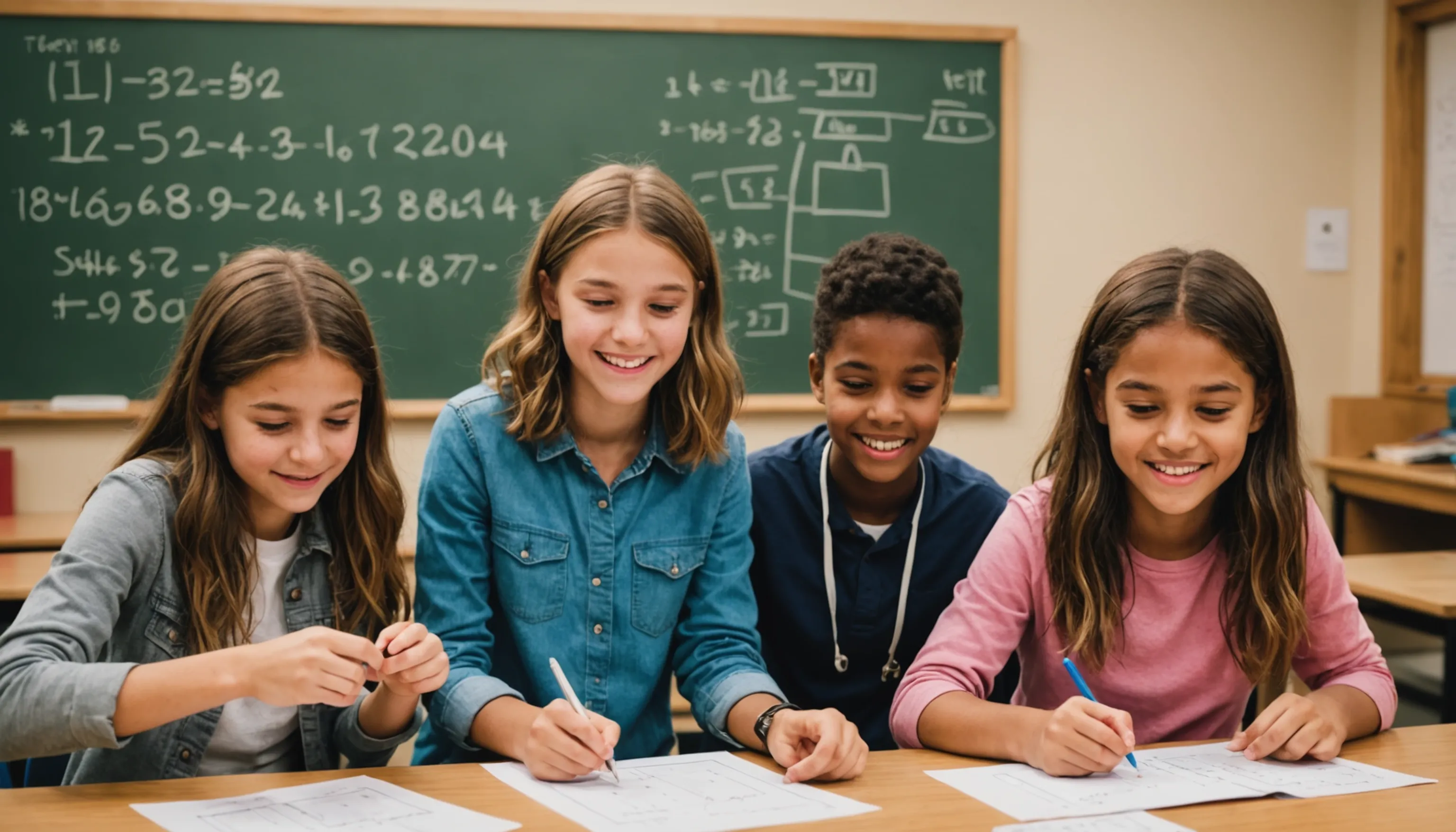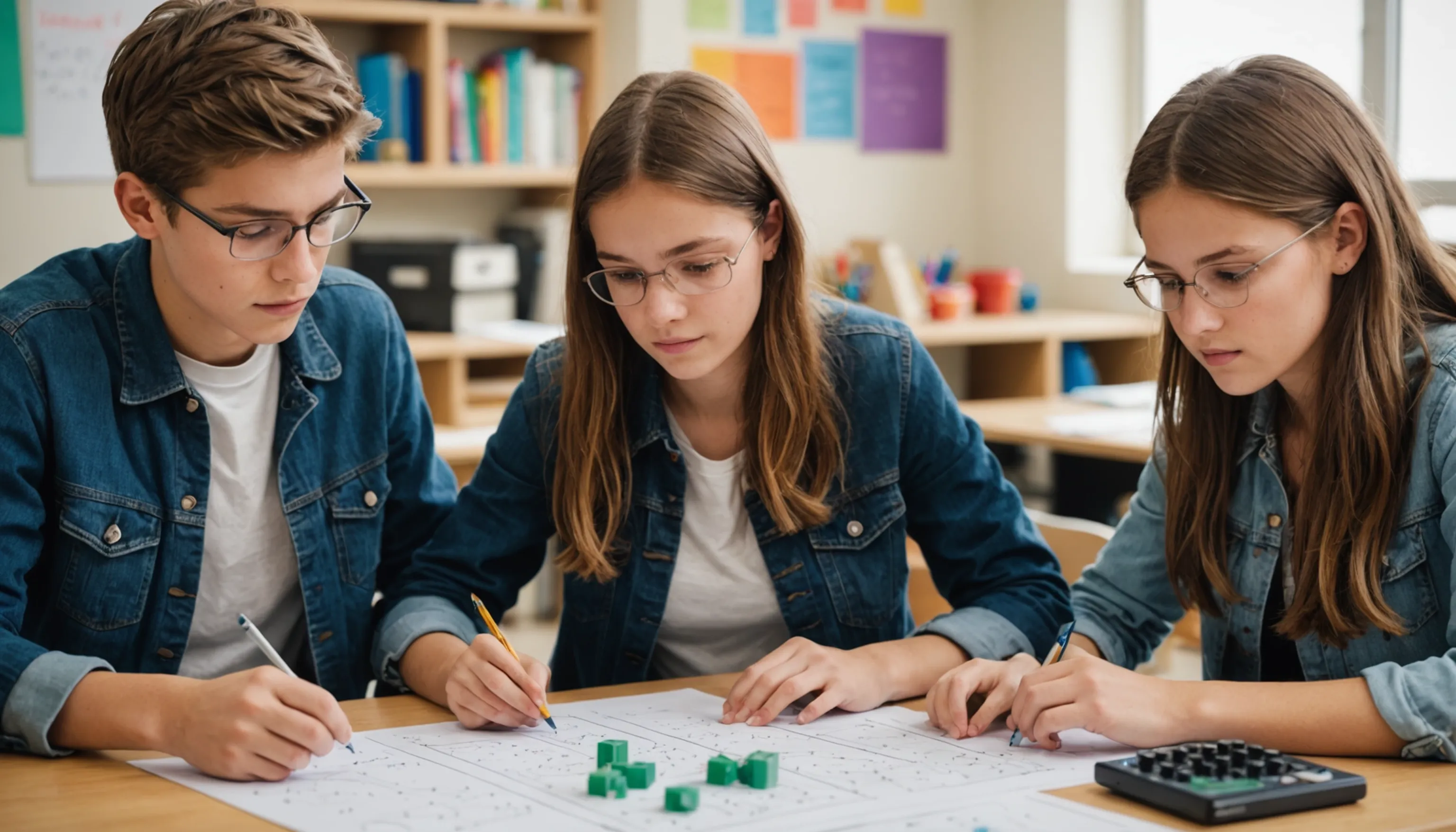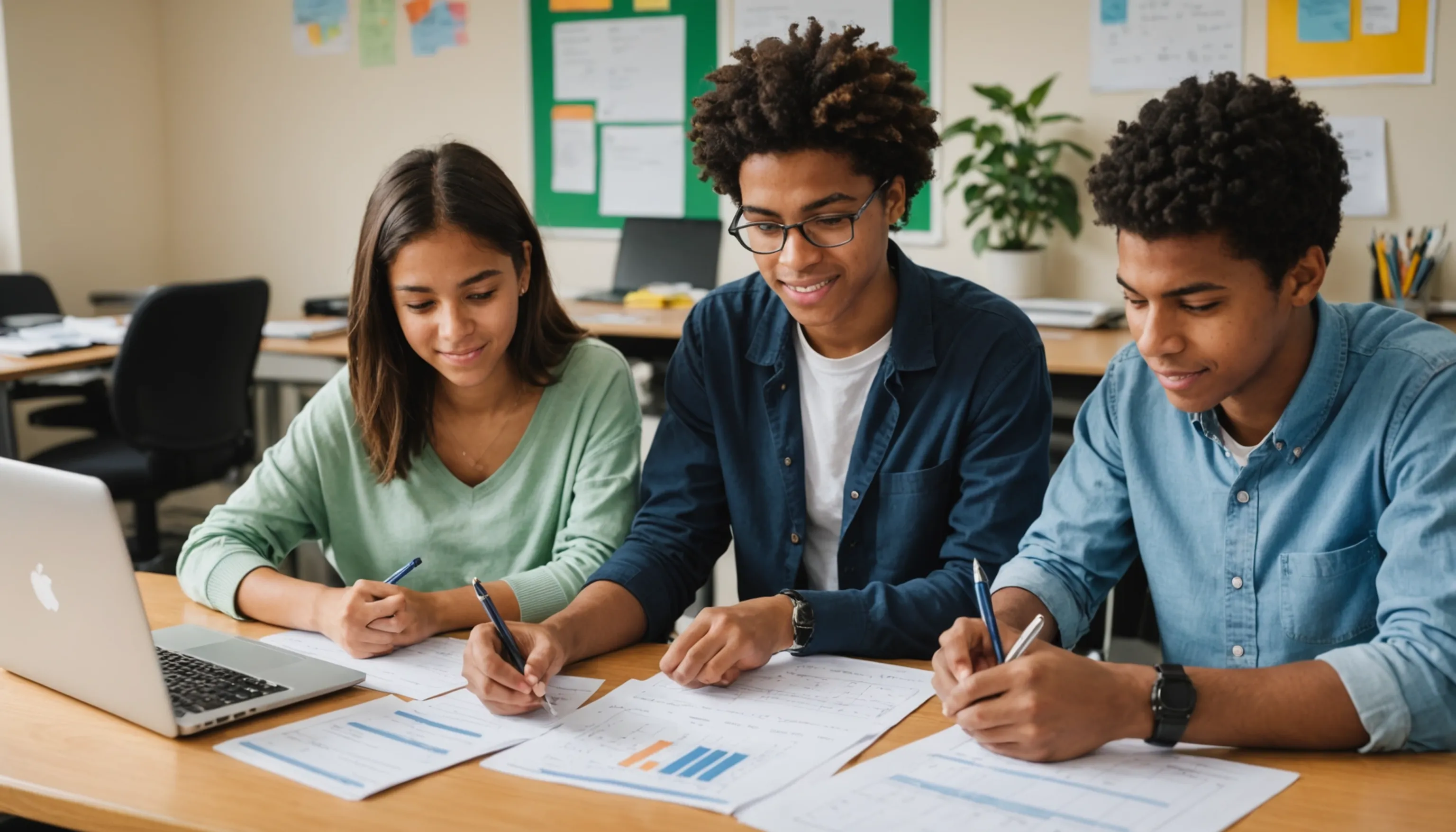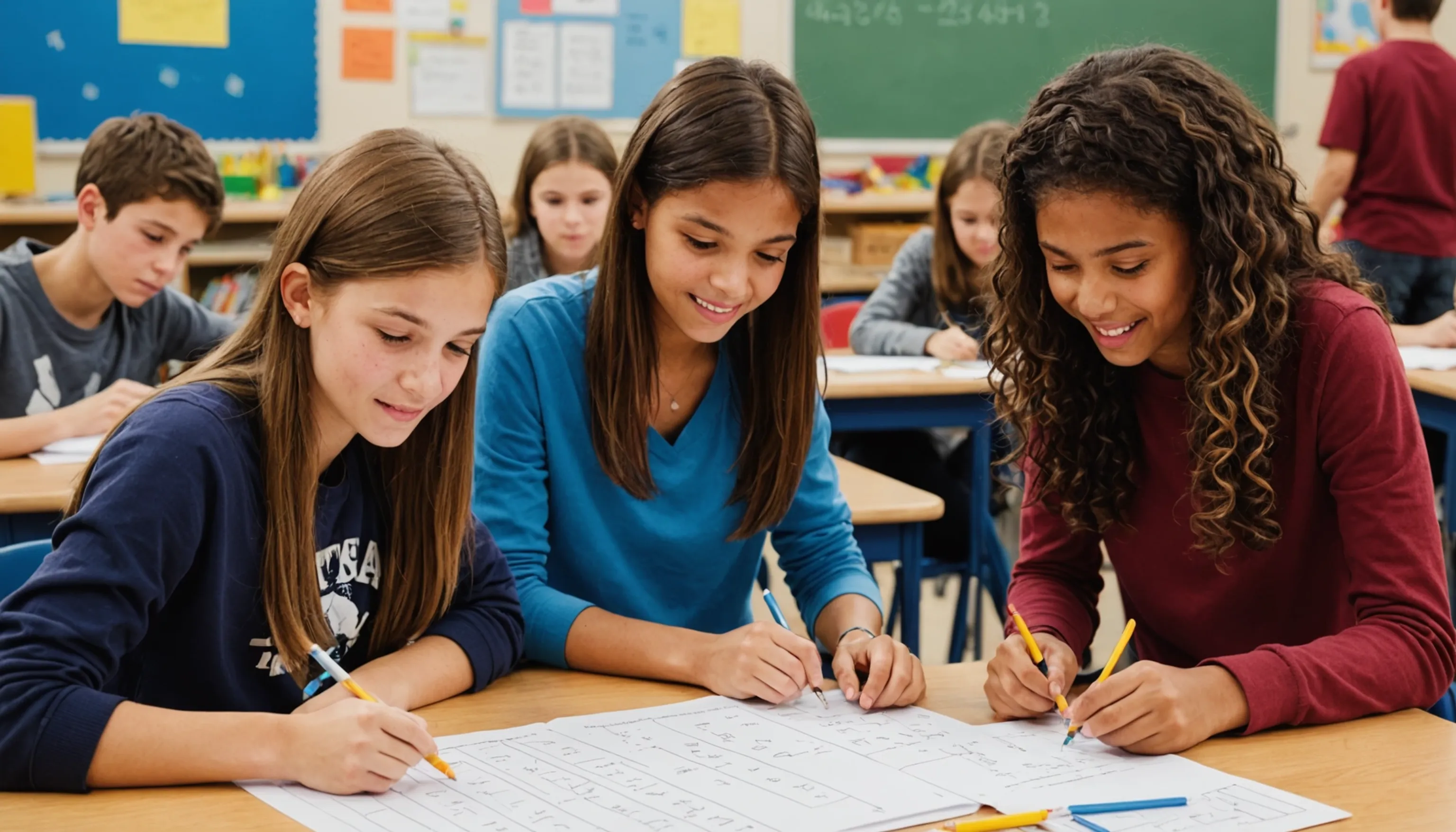5 Ideas for After-School Math
 HvWHenry van Wagenberg
HvWHenry van Wagenberg
Engaging After-School Math Activities for Teens
Engaging after-school math activities for teens can make learning enjoyable while reinforcing essential skills. Consider activities like math scavenger hunts, where students solve problems to find hidden clues. Another option is to organize math-themed escape rooms, where participants work through puzzles to 'escape' within a time limit.
Additionally, hosting math clubs can foster camaraderie and allow teens to explore topics of interest. Incorporating technology, such as coding challenges or math-focused apps, can also captivate students, making math more relatable and fun.
Interactive Math Games
Interactive math games are a fantastic way to make learning math fun and engaging for teens. These games not only improve mathematical skills but also foster critical thinking and teamwork. There are various types of interactive math games that can be integrated into after-school activities, such as:
- Online Math Platforms: Websites like Khan Academy and Prodigy offer interactive lessons and games that adapt to the student's skill level, making it easier for them to learn at their own pace.
- Board Games: Classic games like Monopoly or Clue can be adapted to include math challenges, helping students practice their math skills in a fun, competitive environment.
- Math Jeopardy: Create a game of Jeopardy with math-related questions that can be played in teams, encouraging collaboration and problem-solving.
- Card Games: Games like 'Math War' can be used to reinforce basic arithmetic skills in a playful setting.
- Mobile Apps: There are numerous apps available that provide interactive math challenges and puzzles, allowing students to practice their skills on the go.
By incorporating interactive math games into after-school activities, parents and teachers can help teens develop a positive attitude towards math. The key is to choose games that are age-appropriate and align with the math topics they are currently studying. This approach not only enhances their skills but also encourages a lifelong love for learning.

Math-Based Science Projects
Math-based science projects provide an excellent opportunity for teens to explore the intersection of mathematics and science in a hands-on way. These projects can help students develop critical thinking skills while applying mathematical concepts to real-world situations. Here are some engaging project ideas:
- Data Analysis of Local Weather: Students can collect temperature, precipitation, and wind speed data over a month and use statistical methods to analyze trends and make predictions.
- Building a Scale Model: Teens can design and construct scale models of solar systems or buildings, applying geometry and measurement skills to ensure accuracy.
- Physics of Roller Coasters: Students can calculate the potential and kinetic energy of a homemade roller coaster using foam tubing and marbles, allowing them to explore concepts of physics alongside mathematical calculations.
- Environmental Statistics: Conduct surveys on local wildlife or plant growth and analyze the data using graphs and charts to understand ecological patterns.
- Probability Experiments: Students can conduct experiments with dice or cards to explore probability, recording their results and comparing them to theoretical probabilities.
These math-based science projects not only reinforce mathematical concepts but also encourage teamwork and creativity. By engaging in such projects, teens can better appreciate the relevance of math in scientific inquiry, leading to a deeper understanding of both subjects. Ultimately, these experiences can spark a passion for STEM fields and foster essential skills for future academic pursuits.
Real-Life Math Applications
Real-life math applications are essential for helping teens understand the relevance of math beyond the classroom. Everyday situations, such as budgeting for a school event or planning a road trip, can illustrate how math is used in daily life. For instance, calculating total costs, comparing prices, and understanding interest rates for savings accounts are practical examples that enhance financial literacy.
Additionally, incorporating math into hobbies like sports statistics or cooking measurements can make learning engaging. By showcasing these real-life scenarios, teens can appreciate the importance of math skills in their everyday lives.

Budgeting and Money Management
Budgeting and money management are crucial skills for teens to develop, and integrating these concepts into math education can significantly enhance their financial literacy. Understanding how to create a budget involves applying mathematical principles to track income, expenses, and savings.
To begin, students can start by listing their monthly income, which may include allowances, part-time job earnings, or gifts. Next, they should categorize their expenses into fixed and variable costs, such as:
- Fixed Expenses: Rent, subscriptions, and insurance.
- Variable Expenses: Food, entertainment, and clothing.
Once they have a clear picture of their finances, students can use simple equations to calculate their total income and total expenses, helping them determine whether they are living within their means or if adjustments are needed.
Additionally, teens can learn about the importance of saving by setting financial goals. They can calculate how much they need to save each month to reach those goals, whether it's for a new gadget, a trip, or college expenses. By using tools like spreadsheets or budgeting apps, students can visualize their financial data and track their progress over time.
Incorporating budgeting and money management into math activities not only prepares teens for financial independence but also reinforces their mathematical skills in practical, meaningful ways. This foundation will serve them well as they transition into adulthood and face real-world financial responsibilities.
Cooking and Baking Measurements
Cooking and baking measurements are excellent ways to help teens apply math skills in a fun and delicious context. Understanding how to measure ingredients accurately is crucial in the culinary world, where precision can make the difference between a successful dish and a culinary disaster.
Teens can start by familiarizing themselves with common measurement units, such as cups, tablespoons, teaspoons, ounces, and grams. Engaging in cooking projects allows them to practice converting between these units, which is a valuable skill. For instance, if a recipe calls for 2 cups of flour but only 1 cup is available, they can calculate how much more is needed.
Additionally, they can explore scaling recipes up or down based on serving sizes. For example, if a recipe serves four but they want to serve six, they can use fractions and ratios to determine the correct amount of each ingredient needed.
Another engaging way to incorporate math is through baking, where precise measurements are vital. Teens can learn about the science of baking by measuring ingredients, observing how different ratios affect the texture and flavor of baked goods, and adjusting measurements based on altitude or humidity.
By incorporating cooking and baking measurements into after-school activities, teens not only enhance their math skills but also gain practical life skills that will benefit them in the kitchen and beyond. This hands-on approach fosters creativity, encourages teamwork, and builds confidence in their abilities.
Math Tutoring Sessions
Math tutoring sessions provide an excellent opportunity for teens to receive personalized support in their mathematical studies. These sessions can be tailored to address specific areas of difficulty, whether it's algebra, geometry, or calculus. Tutors can use interactive methods, such as problem-solving exercises and real-world applications, to engage students effectively.
Group tutoring can also foster collaboration, allowing students to learn from one another. Through regular practice and guidance, students can build their confidence and improve their skills, leading to better academic performance and a deeper appreciation for math.
Peer Tutoring for Collaborative Learning
Peer tutoring for collaborative learning is an effective strategy that benefits both the tutor and the student receiving help. This approach allows teens to learn from their peers in a supportive environment, making math concepts more relatable and less intimidating. By explaining concepts to one another, students reinforce their understanding while developing communication and leadership skills.
In a peer tutoring setup, students can be paired based on their strengths and weaknesses. For example, a student excelling in algebra can assist another who struggles with the subject. This not only fosters a sense of community but also encourages students to take ownership of their learning.
During peer tutoring sessions, tutors can employ various engaging methods, such as:
- Group Problem-Solving: Working together on challenging problems helps students approach math from different angles.
- Interactive Games: Incorporating math games can make learning enjoyable while reinforcing concepts.
- Real-Life Applications: Discussing how math is used in daily life can make the subject more relevant and interesting.
Moreover, peer tutoring can also help build confidence. When students see their peers succeed, it motivates them to improve and engage more actively in their learning. By implementing peer tutoring for collaborative learning, schools can create a positive learning atmosphere where students feel comfortable asking questions and supporting one another, ultimately enhancing their overall math skills.
Utilizing Online Resources and Apps
In today's digital age, utilizing online resources and apps can significantly enhance the learning experience for teens studying math. These tools offer interactive and engaging platforms that cater to various learning styles, making math more accessible and enjoyable.
There are numerous websites and apps designed specifically for math education. For example, platforms like Khan Academy provide comprehensive lessons on a wide range of topics, from basic arithmetic to advanced calculus. These resources include instructional videos, practice exercises, and quizzes that allow students to learn at their own pace.
Additionally, educational apps like Photomath enable students to take pictures of math problems and receive step-by-step solutions. This not only helps them understand the process but also encourages independent problem-solving.
Online math games and competitions can also motivate students to practice their skills while having fun. Websites like Mathletics and Prodigy turn math practice into interactive games, where students can earn rewards and compete with peers.
Furthermore, social media platforms and online forums can create a sense of community. Students can join groups or follow pages dedicated to math education, where they can share tips, ask questions, and collaborate with others.
By integrating online resources and apps into their study routines, teens can gain a deeper understanding of math concepts, improve their problem-solving skills, and develop a more positive attitude towards mathematics. This approach not only prepares them for academic success but also equips them with essential skills for the future.
